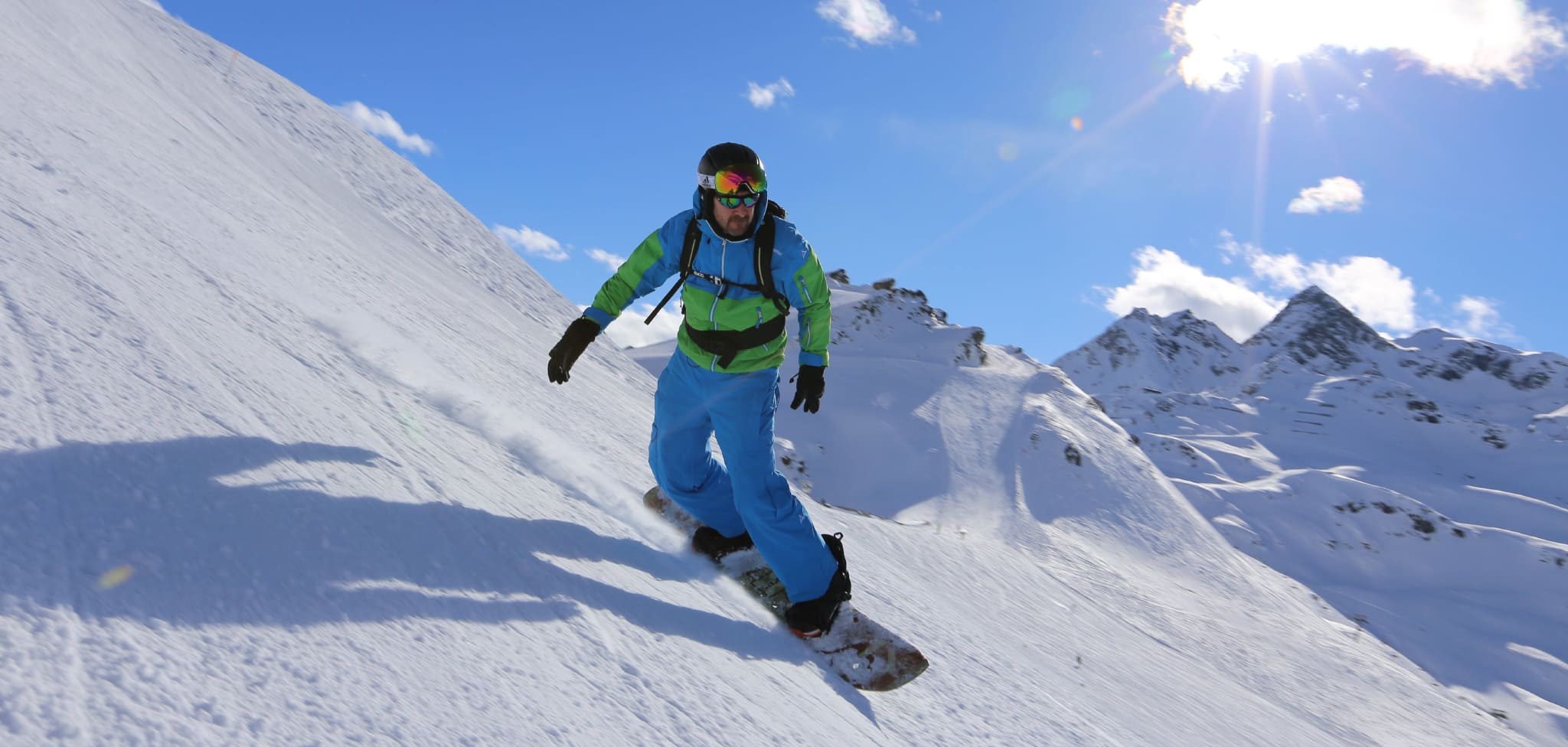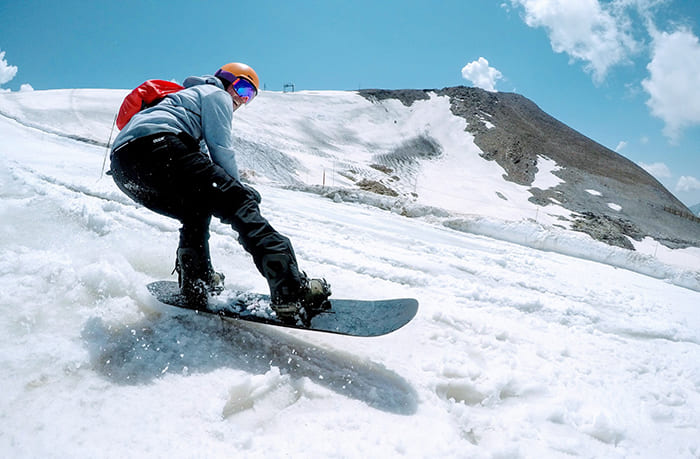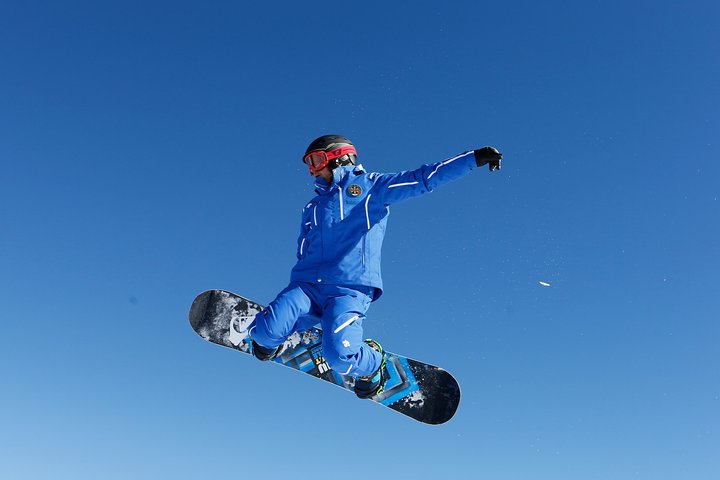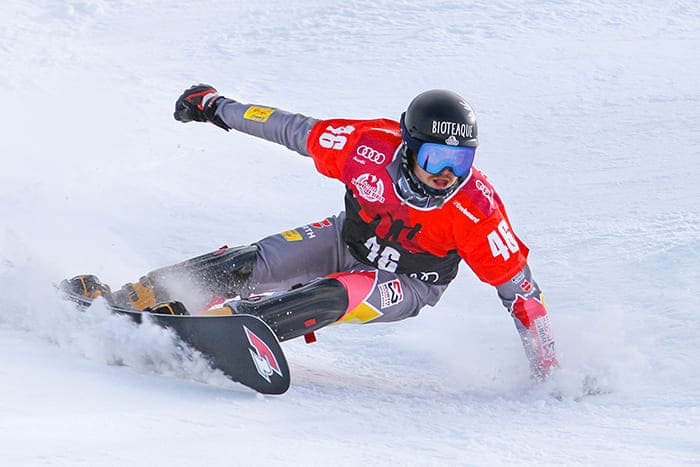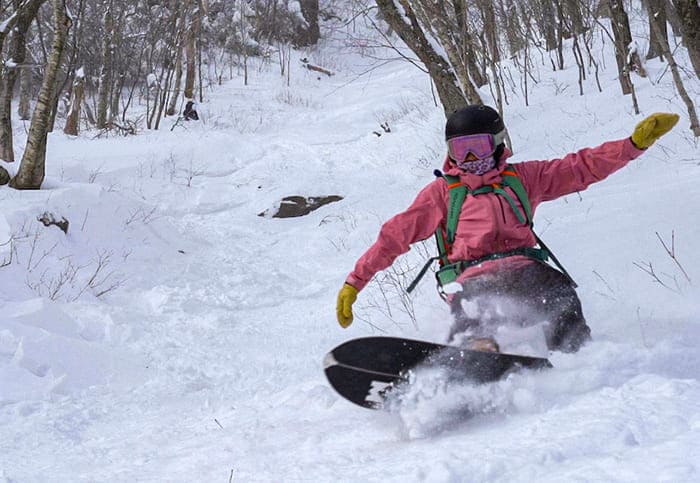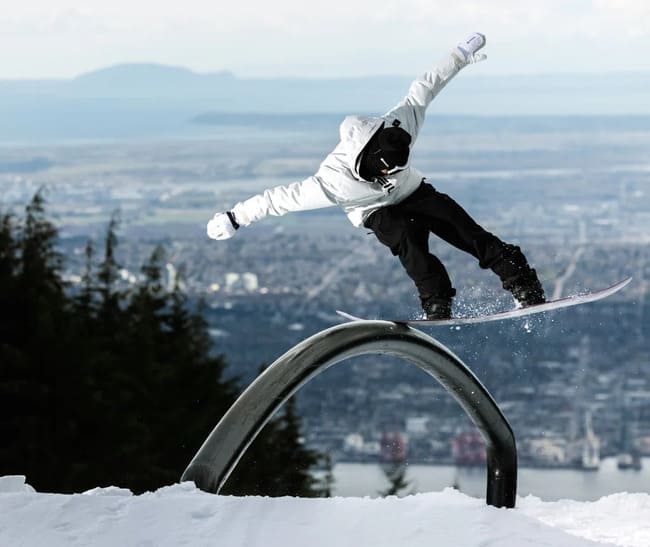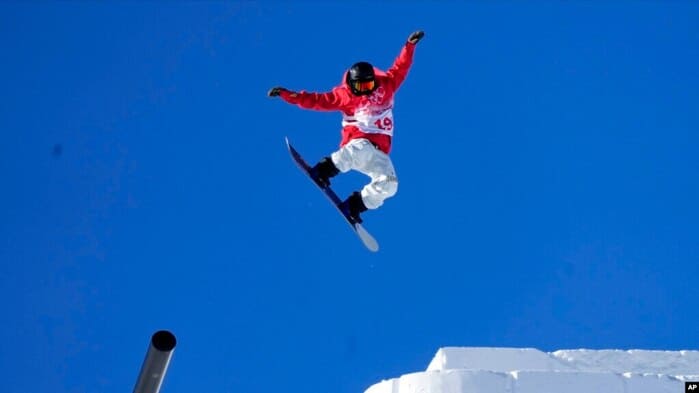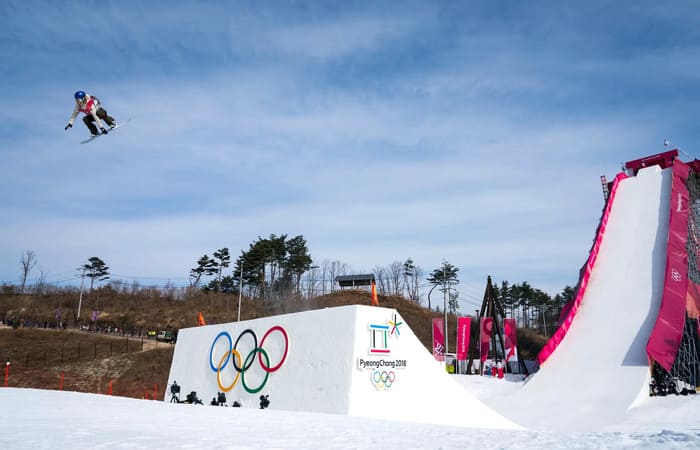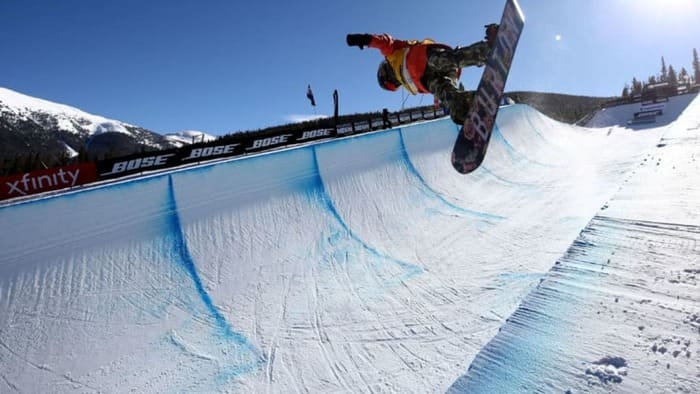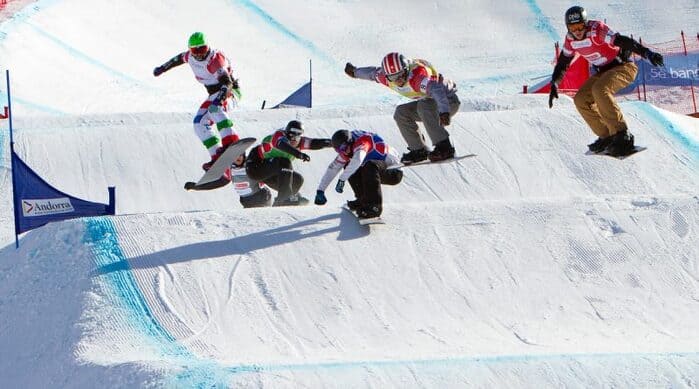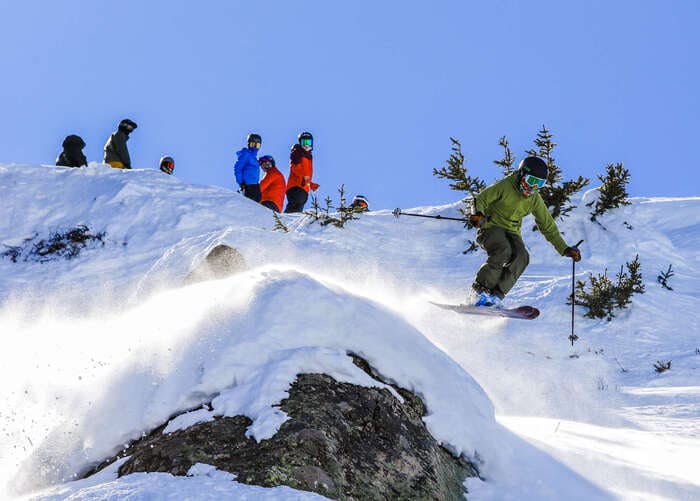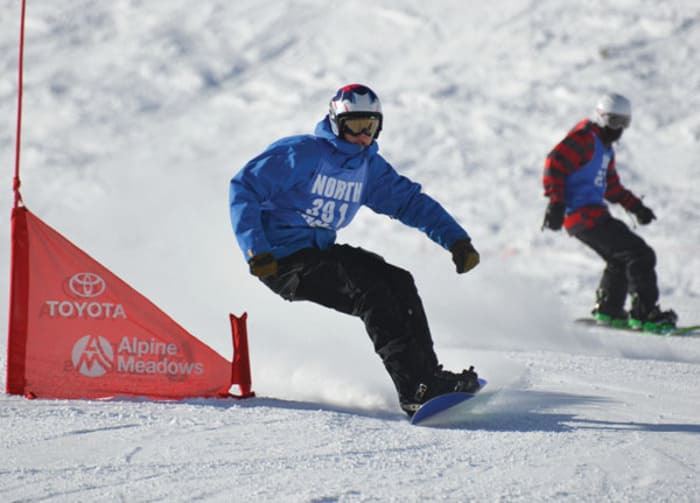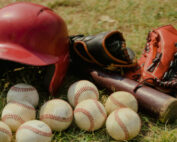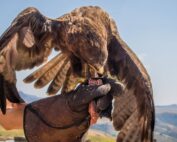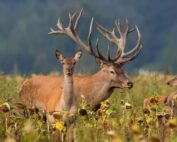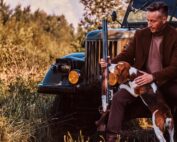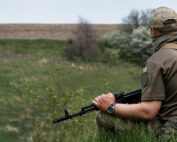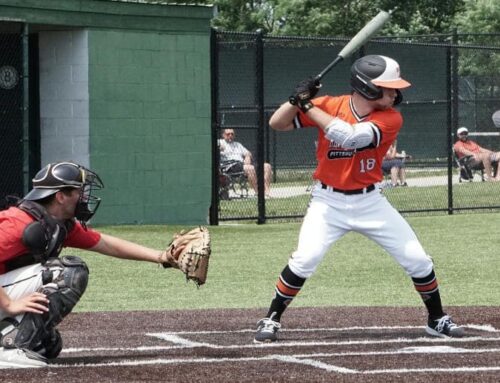What Types and Styles of Snowboarding Exist?
Snowboarding has become an increasingly popular winter sport, attracting thrill-seekers and adventure enthusiasts from all walks of life. From carving down slopes to performing jaw-dropping tricks, snowboarding offers a range of styles and disciplines to suit every rider’s preferences. In this comprehensive guide, we will delve into the various types and styles of snowboarding, providing insights into the equipment, techniques, and unique features of each. Whether you’re a beginner or an experienced rider looking to expand your horizons, this article will serve as your ultimate resource. So grab your snowboard and let’s hit the slopes!
Types and Styles of Snowboarding
Snowboarding has evolved over the years and has given rise to different types and styles of snowboarding. Each type of snowboarding has its own unique characteristics, equipment, and moves. Here are the most common types of snowboarding:
Freeriding: The All-Mountain Adventure
Freeriding, also known as “all mountain snowboarding,” offers riders the freedom to explore and conquer any terrain. It is a versatile style that focuses on the pure enjoyment of the ride rather than technicality. As a beginner, freeriding is an excellent starting point to develop your skills and gain confidence on the slopes. The equipment used in freeriding includes soft snowboard boots, plate bindings, and strap or flow-in bindings. Freeride snowboards are longer, narrower, and feature a deeper side cut, providing stability and maneuverability on various surfaces.
Equipment for Freeriding
In freeriding, choosing the right equipment is crucial for a smooth and enjoyable experience on the mountain. Here are some key components to consider:
Snowboard
Freeride snowboards are specifically designed for all-mountain exploration. These boards are longer and narrower than other types of snowboards, providing stability and control at high speeds. They often feature a directional shape, meaning the nose is slightly longer and wider than the tail, enhancing performance in powder and variable conditions.
Boots
Soft snowboard boots are the preferred choice for freeriders. These boots offer flexibility and comfort, allowing for greater freedom of movement. They provide the necessary support and cushioning to absorb impacts and vibrations while riding.
Bindings
Plate bindings and strap or flow-in bindings are commonly used in freeriding. Plate bindings offer increased responsiveness and control, while strap or flow-in bindings provide convenience and ease of use. The choice of bindings ultimately depends on personal preference and riding style.
Techniques and Tips for Freeriding
Freeriding involves a combination of skills and techniques to navigate various terrains and conditions. Here are some tips to help you make the most of your freeriding experience:
Carving
Carving is a fundamental technique in freeriding that involves smoothly transitioning from edge to edge while maintaining control and precision. To carve effectively, bend your knees, shift your weight to the inside of the turn, and engage the edges of your snowboard.
Powder Riding
Powder riding is one of the most exhilarating experiences in freeriding. When riding in deep snow, keep your weight centered and lean back slightly to stay afloat. Use wide, sweeping turns to maintain speed and control in powder.
Terrain Awareness
In freeriding, it’s essential to be aware of your surroundings and assess the terrain ahead. Look for natural features such as jumps, drops, and transitions that can enhance your ride. Always exercise caution and adjust your riding style according to the terrain conditions.
Safety Precautions
Safety should be a top priority in freeriding. Always wear a helmet and appropriate protective gear to minimize the risk of injury. Familiarize yourself with the mountain’s rules and regulations, and be aware of avalanche conditions if riding in the backcountry.
Freestyle: Unleashing Your Creativity
Freestyle snowboarding is all about pushing the boundaries of creativity and style. It involves performing tricks, jumps, rail slides, and halfpipe maneuvers. Freestyle riders thrive on the adrenaline rush of aerial maneuvers and the freedom to express themselves on the mountain. This style is more suitable for experienced riders who are comfortable with the technical aspects of snowboarding.
Equipment for Freestyle
Freestyle snowboarding requires specific equipment designed to enhance maneuverability and performance in the park. Here are some key components to consider:
Snowboard
Freestyle snowboards are typically shorter, lighter, and softer than freeride boards. They feature a twin-tip shape, meaning the nose and tail are identical, allowing riders to perform tricks and land switch (riding backward).
Boots
Soft boots are the preferred choice for freestyle riders as they offer flexibility and ease of movement. These boots provide the necessary support for jumps and tricks while maintaining comfort and control.
Bindings
In freestyle snowboarding, bindings with a medium flex are commonly used. These bindings offer a balance between responsiveness and forgiveness, allowing for quick adjustments and precise control during tricks and jumps.
Tricks and Techniques for Freestyle
Freestyle snowboarding encompasses a wide range of tricks and techniques. Here are some popular ones to explore:
Ollie
The ollie is a fundamental trick in freestyle snowboarding. It involves using your legs to pop the board off the ground, allowing you to perform jumps and tricks. To execute an ollie, bend your knees, push down on the tail of the board, and spring into the air.
Buttering
Buttering is a stylish technique that involves pressing and rotating the board while riding. It showcases balance and control and can be performed on flat ground or on features in the park. Experiment with different combinations of presses and rotations to add flair to your riding.
Grabs
Grabs are a staple of freestyle snowboarding and involve reaching down and grabbing the board while in the air. Popular grab variations include indy grab, mute grab, and tail grab. Grabs add style and creativity to jumps and tricks.
Rail Slides
Rail slides are performed on metal rails or boxes found in terrain parks. They require balance, precision, and control. Approach the rail with speed, bend your knees, and use your edges to slide along the rail. Experiment with different slides and combinations to challenge yourself.
FreeCarve: The Art of Precision
FreeCarve, also known as alpine snowboarding, is a style focused on speed and precision carving turns. It requires strength, concentration, and a high level of technical skill. FreeCarve snowboarding takes place on hard-packed and groomed runs, and it demands precise edge control and body positioning.
Equipment for FreeCarve
FreeCarve snowboarding requires specialized equipment designed for high-speed descents and aggressive turns. Here are some key components to consider:
Snowboard
FreeCarve snowboards are longer, narrower, and stiffer than other types of snowboards. They provide stability and edge-holding ability at high speeds. These boards often feature a directional shape and a more aggressive sidecut for enhanced carving performance.
Boots
FreeCarve snowboard boots, often referred to as hard boots, are similar to ski boots. They provide maximum support and stiffness, allowing for precise control and power transmission. Hard boots offer excellent ankle stability and are essential for aggressive carving.
Bindings
Plate bindings are commonly used in FreeCarve snowboarding. These bindings offer increased responsiveness and energy transfer, allowing for precise control and carving performance. Plate bindings provide a secure connection between the boots and the board, enhancing stability and power transmission.
Techniques and Tips for FreeCarve
FreeCarve snowboarding requires a strong foundation of technical skills and proper body positioning. Here are some tips to help you master the art of precision carving:
Body Positioning
Maintain a low and balanced stance while carving. Bend your knees and keep your weight centered over the board. Engage your edges by applying pressure through your feet and ankles. Proper body positioning is crucial for maintaining control and stability during high-speed turns.
Carving Technique
Carving in FreeCarve snowboarding involves using your edges to carve deep, arcing turns. Start by initiating the turn with your upper body, followed by engaging your edges and shifting your weight to the inside of the turn. Focus on maintaining a smooth and continuous edge contact throughout the turn.
Speed Control
Mastering speed control is essential in FreeCarve snowboarding. Use a combination of edge control and body positioning to regulate your speed. Gradually increase the edge angle to accelerate and decrease the edge angle to slow down. Practice controlling your speed on different slopes and terrain to gain confidence and control.
Advanced Techniques
As you progress in FreeCarve snowboarding, you can explore advanced techniques such as carving on steeper slopes, performing dynamic turns, and linking multiple turns seamlessly. These techniques require finesse, balance, and precise edge control. Work on gradually increasing your speed and challenging yourself with more aggressive turns.
Splitboarding: The Ultimate Backcountry Experience
Splitboarding combines the freedom of snowboarding with the ability to explore the backcountry like a skier. It allows riders to access remote and untouched terrain, making it a popular choice for adventurers seeking a unique snowboarding experience. Splitboards are specially designed snowboards that can be split apart into two skis for uphill travel.
Equipment for Splitboarding
Splitboarding requires specialized equipment designed for both snowboarding and skiing. Here are the key components to consider:
Splitboard
A splitboard is a snowboard that can be separated into two skis for climbing uphill. It features a unique binding interface that allows riders to switch between “ski mode” and “ride mode” quickly. Splitboards are typically longer and wider than traditional snowboards to provide flotation and stability in deep snow.
Climbing Skins
Climbing skins are essential for uphill travel in splitboarding. These adhesive strips are attached to the base of the skis to provide traction on the snow. They prevent the skis from sliding backward while climbing and allow riders to ascend slopes efficiently.
Bindings
Splitboard bindings are designed to accommodate both downhill riding and uphill touring. They feature a free-heel mechanism that allows for efficient climbing in “ski mode” and a locked heel for stability during descents in “ride mode.” Splitboard bindings should be compatible with your boots and provide a secure and responsive connection to the board.
Splitboarding Techniques and Tips
Splitboarding requires a combination of snowboarding and skiing techniques. Here are some tips to help you make the most of your splitboarding adventures:
Transitioning between Modes
Mastering the transition between “ski mode” and “ride mode” is essential in splitboarding. Practice switching between modes in a controlled environment before venturing into the backcountry. Familiarize yourself with the process of attaching and removing climbing skins, adjusting bindings, and securing the board.
Uphill Climbing
When climbing uphill in splitboarding, use a technique similar to skiing. Engage the climbing skins to provide traction and maintain a steady pace. Use a zigzag or switchback pattern when ascending steep slopes to conserve energy. Learn to read the terrain and assess snow conditions to choose the best route.
Downhill Descents
When transitioning to “ride mode” for downhill descents, secure your bindings and ensure they are properly adjusted for your riding style. Descend with caution, especially in unfamiliar terrain. Practice controlled turns and maintain a balanced stance to navigate variable snow conditions. Always prioritize safety and assess the avalanche risk before entering the backcountry.
Backcountry Safety
Splitboarding in the backcountry requires knowledge of avalanche safety and proper equipment. Attend avalanche safety courses, carry essential safety gear such as a transceiver, shovel, and probe, and travel with experienced partners. Stay informed about current weather and snow conditions and be prepared to adjust your plans accordingly.
Jibbing: Pushing the Boundaries of Creativity
Jibbing is a style of snowboarding that focuses on performing technical tricks on non-standard surfaces. It is a freestyle discipline that allows riders to showcase their creativity and style both on and off the snow. Jibbing moves typically involve jumping, sliding, and riding on top of objects such as metal rails, boxes, benches, walls, vehicles, rocks, and logs.
Equipment for Jibbing
Jibbing requires specific equipment designed to enhance stability and maneuverability on non-standard surfaces. Here are the key components to consider:
Snowboard
Jibbing snowboards are typically shorter, softer, and more flexible than other snowboards. They are designed to withstand the impact and vibrations of tricks and provide a stable platform for sliding on rails and boxes. Jibbing boards often feature a twin-tip shape for riding switch and performing tricks in both directions.
Boots
Soft snowboard boots are the preferred choice for jibbing. They offer flexibility and freedom of movement, crucial for executing tricks and maneuvers on non-standard surfaces. Soft boots also provide cushioning and impact absorption, reducing the risk of injury during landings.
Bindings
Bindings for jibbing should have a medium flex, offering a balance between responsiveness and forgiveness. They should provide a secure and comfortable connection between the boots and the board. Adjustable binding angles allow riders to customize their stance and optimize performance for different tricks and features.
Tricks and Techniques for Jibbing
Jibbing encompasses a wide range of tricks and techniques. Here are some popular ones to explore:
Boardslides
Boardslides involve sliding along a rail or box with the snowboard perpendicular to the feature. Approach the feature with speed, center your weight over the board, and lock onto the rail or box with your edges. Maintain balance and control throughout the slide, and exit smoothly.
50-50s
A 50-50 is a basic jibbing trick that involves sliding straight down a rail or box with the snowboard parallel to the feature. Approach the feature with speed, center your weight over the board, and maintain balance throughout the slide. Practice controlling your speed and maintaining a stable position on the feature.
Presses
Presses involve shifting your weight onto either the nose or tail of the snowboard while riding. Nose presses and tail presses can be performed on flat ground or on features. These tricks require balance and control and can add style and creativity to your jibbing repertoire.
Spins
Spins are an integral part of jibbing and involve rotating the snowboard while in the air or on a feature. Start with smaller spins and gradually work your way up to more advanced rotations. Practice proper edge control and body positioning to execute clean and controlled spins.
Slopestyle: Conquering the Obstacle Course
Slopestyle is a freestyle variation of snowboarding that combines jumps, rails, and other features into a challenging obstacle course. It is a competitive discipline where riders showcase their skills and creativity by performing a variety of tricks and maneuvers on a predefined course. Slopestyle is known for its high-flying jumps, technical rail slides, and stylish grabs.
Equipment for Slopestyle
Slopestyle requires specialized equipment designed to withstand the impact and demands of high-intensity tricks. Here are the key components to consider:
Snowboard
Slopestyle snowboards are typically shorter and lighter than freeride boards. They are designed to provide maneuverability and control in the park. These boards often feature a twin-tip shape, allowing riders to perform tricks and land switch.
Boots
Soft boots are the preferred choice for slopestyle riders as they offer flexibility and ease of movement. These boots provide the necessary support for jumps and tricks while maintaining comfort and control.
Bindings
Bindings for slopestyle snowboarding should have a medium flex, offering a balance between responsiveness and forgiveness. They should provide a secure and comfortable connection between the boots and the board. Adjustable binding angles allow riders to customize their stance and optimize performance for different tricks and features.
Tricks and Techniques for Slopestyle
Slopestyle encompasses a wide range of tricks and techniques. Here are some popular ones to explore:
Jumps
Jumps are a key component of slopestyle and involve launching off ramps or kickers to perform aerial maneuvers. Approach the jump with speed, maintain a balanced stance, and pop off the lip using your legs. Practice controlling your rotations and landings to execute clean and stylish jumps.
Rail Slides
Rail slides are an integral part of slopestyle and involve sliding along metal rails or boxes. Approach the feature with speed, center your weight over the board, and lock onto the rail or box with your edges. Practice maintaining balance and control throughout the slide and experiment with different tricks and slide variations.
Grabs
Grabs add style and creativity to slopestyle tricks. They involve reaching down and grabbing the snowboard while in the air. Popular grab variations include indy grab, mute grab, and tail grab. Experiment with different grabs to add flair to your jumps and spins.
Spins and Rotations
Spins and rotations are a hallmark of slopestyle snowboarding. Start with smaller spins and gradually work your way up to more advanced rotations. Practice proper edge control and body positioning to execute clean and controlled spins. Combine spins with grabs to add style and difficulty to your tricks.
Big Air: Defying Gravity
Big Air snowboarding is all about pushing the limits and defying gravity. It involves launching off massive jumps and performing breathtaking tricks in mid-air. Big Air events showcase the highest level of aerial maneuvers and are a spectacle of skill, athleticism, and creativity.
Equipment for Big Air
Big Air snowboarding requires specialized equipment designed to withstand the impact and demands of high-flying tricks. Here are the key components to consider:
Snowboard
Big Air snowboards are typically shorter and lighter than other snowboards. They are designed to provide maximum pop and maneuverability off jumps. These boards often feature a twin-tip shape, allowing riders to perform tricks and land switch.
Boots
Soft boots are the preferred choice for Big Air riders as they offer flexibility and ease of movement. These boots provide the necessary support for jumps and tricks while maintaining comfort and control.
Bindings
Bindings for Big Air snowboarding should have a medium flex, offering a balance between responsiveness and forgiveness. They should provide a secure and comfortable connection between the boots and the board. Adjustable binding angles allow riders to customize their stance and optimize performance for different tricks and features.
Tricks and Techniques for Big Air
Big Air snowboarding involves pushing the boundaries of aerial maneuvers. Here are some popular tricks and techniques to explore:
Rotations
Rotations are a key component of Big Air snowboarding. Riders can perform spins ranging from 180 degrees to multiple rotations. Practice proper edge control, body positioning, and pop off the jump to execute clean and controlled rotations.
Flips
Flips add an extra level of difficulty and style to Big Air tricks. Riders can perform flips in various directions, including front flips, backflips, and sideways flips. Mastering flips requires proper technique, air awareness, and a strong foundation of aerial control.
Grabs
Grabs are an essential element of Big Air snowboarding, adding style and creativity to tricks. Reach down and grab the snowboard while in the air, holding the grab for added style and control. Experiment with different grab variations to showcase your personal flair.
Combinations and Variations
Combining rotations, flips, and grabs allows riders to create unique and impressive trick combinations. Experiment with different combinations and variations to showcase your creativity and individual style. Push yourself to try new tricks and challenge the limits of what is possible in the air.
Halfpipe: Mastering the Vertical Playground
Halfpipe snowboarding takes place in a U-shaped ditch or a purpose-built ramp made of snow. Riders perform tricks while transitioning from one side to the other and while in the air above the sides of the pipe. Halfpipe is a technical discipline that requires mastery of aerial maneuvers, style, and flow.
Equipment for Halfpipe
Halfpipe snowboarding requires specialized equipment designed to enhance performance and control in the vertical playground. Here are the key components to consider:
Snowboard
Halfpipe snowboards are typically shorter and wider than other snowboards. They are designed to provide stability, control, and maneuverability on the walls of the pipe. These boards often feature a twin-tip shape, allowing riders to perform tricks and land switch.
Boots
Soft boots are the preferred choice for halfpipe riders as they offer flexibility and ease of movement. These boots provide the necessary support for jumps and tricks while maintaining comfort and control.
Bindings
Bindings for halfpipe snowboarding should have a medium flex, offering a balance between responsiveness and forgiveness. They should provide a secure and comfortable connection between the boots and the board. Adjustable binding angles allow riders to customize their stance and optimize performance for different tricks and features.
Tricks and Techniques for Halfpipe
Halfpipe snowboarding requires a combination of technical skills, style, and flow. Here are some popular tricks and techniques to explore:
Airs
Airs are the foundation of halfpipe snowboarding. Riders launch off the walls of the pipe and perform tricks in the air before landing back in the transition. Practice proper edge control, pop off the wall, and execute clean and controlled aerial maneuvers.
Spins
Spins are a staple of halfpipe snowboarding and involve rotating the snowboard while in the air. Start with smaller spins and gradually work your way up to more advanced rotations. Practice proper edge control and body positioning to execute clean and controlled spins.
Grabs
Grabs are an essential element of halfpipe snowboarding, adding style and creativity to tricks. Reach down and grab the snowboard while in the air, holding the grab for added style and control. Experiment with different grab variations to showcase your personal flair.
Transitions and Flow
Mastering transitions and maintaining flow is crucial in halfpipe snowboarding. Focus on smooth and controlled movements from one wall to the other, maintaining speed and rhythm throughout your run. Strive for seamless transitions and link tricks together to create a cohesive and stylish run.
Boardercross: The Thrill of Head-to-Head Racing
Boardercross, also known as “Boarder X” or “Snowboard X,” is a relatively new addition to the snowboarding industry. It involves a number of riders racing down a course that resembles a motocross track. The course is filled with bumps, corners, jumps, and other constructed obstacles, resulting in exciting and unpredictable races.
Equipment for Boardercross
Boardercross requires specialized equipment designed for speed, control, and maneuverability. Here are the key components to consider:
Snowboard
Boardercross snowboards are typically longer and narrower than other snowboards. They are designed to provide stability and control at high speeds. These boards often feature a directional shape, meaning the nose is slightly longer and wider than the tail, enhancing performance in variable conditions.
Boots
Soft boots are the preferred choice for boardercross riders as they offer flexibility and ease of movement. These boots provide the necessary support for high-speed descents and aggressive turns while maintaining comfort and control.
Bindings
Bindings for boardercross snowboarding should have a medium to stiff flex, offering maximum responsiveness and control. They should provide a secure and comfortable connection between the boots and the board. Adjustable binding angles allow riders to customize their stance and optimize performance for different racing conditions.
Techniques and Tips for Boardercross
Boardercross requires a combination of speed, agility, and tactical racing skills. Here are some techniques and tips to excel in this exhilarating discipline:
Racing Line
Mastering the racing line is essential in boardercross. Study the course layout and identify the fastest and most efficient line through the obstacles. Take into account the terrain, jumps, and corners to optimize your speed and maintain control.
Starts and Sprints
Starts are crucial in boardercross races. Practice explosive starts to gain an early advantage and establish a favorable position. Focus on generating power from your legs and using your upper body to maintain balance and control.
Cornering and Passing
Cornering is a key skill in boardercross, as tight turns can make or break a race. Practice carving turns and maintaining speed through corners. Look for passing opportunities, such as inside lines or overtaking in straight sections, to gain an advantage over your competitors.
Tactical Racing
Boardercross is not only about speed but also tactical racing. Pay attention to your competitors’ movements and adjust your strategy accordingly. Anticipate their actions and use your racing knowledge to make split-second decisions during the race.
Big Mountain: Conquering Nature’s Playground
Big Mountain snowboarding takes place in open and ungroomed terrain, challenging riders to find their way down the mountain with style and difficulty. It combines elements of freeriding and backcountry snowboarding, offering a unique and adventurous snowboarding experience.
Equipment for Big Mountain
Big Mountain snowboarding requires specialized equipment designed for variable and unpredictable conditions. Here are the key components to consider:
Snowboard
Big Mountain snowboards are typically longer and wider than other snowboards. They are designed to provide stability, flotation, and control in deep snow and challenging terrain. These boards often feature a directional shape for enhanced performance in powder and variable conditions.
Boots
Soft boots are the preferred choice for Big Mountain riders as they offer flexibility and ease of movement. These boots provide the necessary support for navigating steep descents and challenging terrain while maintaining comfort and control.
Bindings
Bindings for Big Mountain snowboarding should have a medium to stiff flex, offering maximum responsiveness and control. They should provide a secure and comfortable connection between the boots and the board. Adjustable binding angles allow riders to customize their stance and optimize performance for different snow conditions.
Techniques and Tips for Big Mountain
Big Mountain snowboarding requires a combination of technical skills, mountain knowledge, and a sense of adventure. Here are some techniques and tips to conquer nature’s playground:
Terrain Assessment
Before venturing into big mountain terrain, assess the conditions and terrain features. Look for natural features such as chutes, cliffs, and tree runs that can provide exciting challenges. Familiarize yourself with the mountain’s layout and plan your route accordingly.
Powder Riding
Mastering powder riding is essential in big mountain snowboarding. Keep your weight centered and lean back slightly to stay afloat in deep snow. Use wide, sweeping turns to maintain speed and control. Practice adjusting your riding technique to different snow conditions and experiment with riding techniques in powder.
Safety Precautions
Big Mountain snowboarding involves risks, and safety should be a top priority. Always wear appropriate safety gear, including a helmet, back protector, and avalanche safety equipment if riding in the backcountry. Stay informed about current weather and snow conditions and be prepared to adjust your plans accordingly.
Mountain Knowledge
Developing mountain knowledge is crucial in big mountain snowboarding. Familiarize yourself with the local terrain, weather patterns, and potential hazards. Understand the mountain’s rules and regulations and respect the environment. Consider taking avalanche safety courses to enhance your knowledge and minimize risks.
Snowboard Racing: The Need for Speed
Snowboard racing is a discipline that combines speed, precision, and technical skill. It involves completing a downhill course constructed of gates, which are tall and short poles connected by a triangular panel. Snowboard racing features two main events: Parallel Slalom and Parallel Giant Slalom, both of which are part of the Winter Olympics.
Equipment for Snowboard Racing
Snowboard racing requires specialized equipment designed for maximum speed and control. Here are the key components to consider:
Snowboard
Snowboard racing requires specific race boards designed for high-speed descents. These boards are typically longer, narrower, and stiffer than other snowboards, providing stability and edge-holding ability. They often feature a directional shape for enhanced performance on groomed runs.
Boots
Snowboard racing boots, also known as hard boots, are similar to ski boots. They provide maximum support and stiffness, allowing for precise control and power transmission. Hard boots offer excellent ankle stability and are essential for aggressive turns and high-speed descents.
Bindings
Bindings for snowboard racing should have a stiff flex, offering maximum responsiveness and power transmission. They should provide a secure and comfortable connection between the boots and the board. Adjustable binding angles allow riders to customize their stance and optimize performance for different racing disciplines.
Techniques and Tips for Snowboard Racing
Snowboard racing requires a combination of speed, technical skill, and race tactics. Here are some techniques and tips to excel in this exhilarating discipline:
Gate Technique
Gate technique is crucial in snowboard racing. Each gate consists of a tall pole and a short pole connected by a triangular panel. The rule is that the rider must pass around the short side of the gate. Practice quick and precise turns to navigate the gates efficiently, minimizing time and distance.
Carving Turns
Carving turns are essential in snowboard racing, allowing riders to maintain speed and control. Practice proper edge control and body positioning to execute clean and powerful turns. Focus on maintaining a smooth and continuous edge contact throughout the turn.
Speed Control
Mastering speed control is important in snowboard racing. Use a combination of edge control, body positioning, and line choice to regulate your speed. Gradually increase the edge angle to accelerate and decrease the edge angle to slow down. Practice controlling your speed on different slopes and terrain to gain confidence and control.
Mental Preparation
Snowboard racing requires mental focus and concentration. Visualize your run before each race, visualize yourself executing clean and precise turns, and mentally prepare for the challenges ahead. Develop a pre-race routine that helps you stay calm, focused, and confident.
Future of Snowboarding
Snowboarding embraces a diverse spectrum of types and styles, each providing distinctive experiences and formidable challenges. Since its inception, snowboarding has journeyed a long path of innovation, and it persists in evolving alongside emerging trends and cutting-edge technologies. As we look ahead, the future of snowboarding gleams with promise, poised for exciting advancements that await on the horizon.
If you’re just starting your snowboarding journey, you might want to check out our guide on “Snowboarding as a Hobby: Tips and Tricks for Beginners” for valuable insights into getting started on the slopes.
Frequently Asked Questions
What are the different snowboard shapes and how do they affect riding?
Snowboards come in various shapes, each with its own unique characteristics that affect the way it rides. Some common shapes include directional, twin, and directional-twin. Directional boards are designed to be ridden in one direction, with a longer nose and shorter tail. Twin boards are symmetrical, with identical nose and tail lengths, and can be ridden equally well in either direction. Directional-twin boards are a combination of both, with a slightly longer nose and a shorter tail. The shape of the board can affect its stability, maneuverability, and speed.
What is alpine snowboarding and how does it differ from other styles?
Alpine snowboarding, also known as carving, is a style of snowboarding that involves making precise turns using the edges of the board. Unlike other styles such as freestyle, alpine snowboarding is focused on speed and technique rather than tricks. Alpine boards are typically longer and narrower than other snowboards, with a stiffer flex and a more aggressive sidecut.
What are the different riding stances in snowboarding and how do they impact performance?
There are two main types of riding stances in snowboarding: regular and goofy. A regular stance means that the rider’s left foot is forward, while a goofy stance means that the rider’s right foot is forward. The stance can affect the rider’s balance and control, and it is important to choose the stance that feels most natural. Additionally, riders can choose between a centered stance, where the bindings are mounted in the middle of the board, or a setback stance, where the bindings are mounted towards the back of the board. A setback stance can provide more stability and control in powder, while a centered stance is better for park riding.
What is freestyle snowboarding and what types of tricks are involved?
Freestyle snowboarding is a style of snowboarding that involves performing tricks and jumps on various features such as rails, boxes, and jumps. Some common freestyle tricks include grabs, spins, and flips. Freestyle snowboards are typically shorter and softer than other snowboards, with a twin shape that allows for riding in either direction.
What are the different types of snowboards and how do they vary in performance?
There are several different types of snowboards, each designed for a specific type of riding. All-mountain boards are versatile and can handle a variety of terrain, while freestyle boards are designed for park riding and performing tricks. Powder boards are wider and have a tapered shape to provide more float in deep snow, while splitboards can be separated into two pieces for backcountry touring. Additionally, there are boards designed specifically for women and children, with narrower widths and softer flexes.
What are the best snowboard styles for beginners and all-mountain riding?
For beginners, all-mountain boards are a good choice as they are versatile and can handle a variety of terrain. Additionally, a softer flex and a twin shape can make learning easier. For all-mountain riding, a directional twin or a directional board can provide stability and control, while a setback stance can help with a float in powder.
RECENT POSTS
History of Baseball
History of Baseball: From Its Origins to Modern TimesBaseball is one of the most popular sports in the United States, with millions of fans tuning in to watch games each year. The sport has a [...]
Hunting Falconry
History of Hunting Falconry: An Overview of Falconry's Evolution and Significance Are you interested in learning about the ancient practice of hunting with trained birds of prey? Falconry has been practiced for thousands of [...]
Hunting Destinations in 2024
Hunting Destinations in 2024: Top Picks for Avid Hunters Are you looking for exciting hunting destinations to explore in 2024? Whether you're a seasoned hunter or just starting, there are plenty of options available [...]
History of hunting dogs
Explore the History and Significance of Hunting Dogs: A Comprehensive Guide If you're a hunting enthusiast, then you know the importance of having a reliable hunting dog by your side. Hunting dogs have been [...]
Hunting as a Hobby
Hunting as a Hobby: An Overview Hunting is a popular outdoor activity enjoyed by millions of people worldwide. While some hunt for food, others do it as a hobby. Hunting as a hobby can [...]

